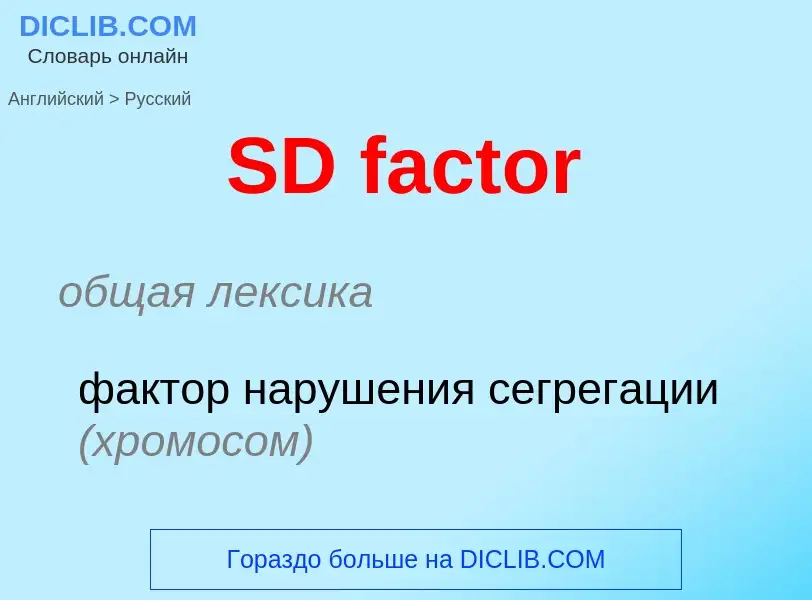Übersetzung und Analyse von Wörtern durch künstliche Intelligenz ChatGPT
Auf dieser Seite erhalten Sie eine detaillierte Analyse eines Wortes oder einer Phrase mithilfe der besten heute verfügbaren Technologie der künstlichen Intelligenz:
- wie das Wort verwendet wird
- Häufigkeit der Nutzung
- es wird häufiger in mündlicher oder schriftlicher Rede verwendet
- Wortübersetzungsoptionen
- Anwendungsbeispiele (mehrere Phrasen mit Übersetzung)
- Etymologie
SD factor - Übersetzung nach russisch
общая лексика
фактор нарушения сегрегации (хромосом)
[,es'di:]
общая лексика
(Single Density) одинарная плотность [записи]
(Start Delimiter) начальный ограничитель
(Secure Digital) формат Secure Digital
формат флэш-карт, продвигаемый ассоциацией SDA. Ёмкость до 1 Гбайт. Миниатюрным вариантом этой карты является формат miniSD
от лат. Scientiae Doctor
сокращение
обозначение Doctor of Science (в Кембриджском [Cambridge University] и некоторых др. университетах; ставится после фамилии; то же, что D Sc)
[standardization document] документ по стандартизации
[system demonstration] демонстрационные испытания системы
существительное
общая лексика
срочная доставка (корреспонденции)
Южная Дакота
финансы
тратта, срочная по предъявлении
синоним
существительное
общая лексика
на неопределенный срок
Южная Дакота (штат США)
Латинский язык
без указания срока или даты
синоним
Definition
Wikipedia
Factor analysis is a statistical method used to describe variability among observed, correlated variables in terms of a potentially lower number of unobserved variables called factors. For example, it is possible that variations in six observed variables mainly reflect the variations in two unobserved (underlying) variables. Factor analysis searches for such joint variations in response to unobserved latent variables. The observed variables are modelled as linear combinations of the potential factors plus "error" terms, hence factor analysis can be thought of as a special case of errors-in-variables models.
Simply put, the factor loading of a variable quantifies the extent to which the variable is related to a given factor.
A common rationale behind factor analytic methods is that the information gained about the interdependencies between observed variables can be used later to reduce the set of variables in a dataset. Factor analysis is commonly used in psychometrics, personality psychology, biology, marketing, product management, operations research, finance, and machine learning. It may help to deal with data sets where there are large numbers of observed variables that are thought to reflect a smaller number of underlying/latent variables. It is one of the most commonly used inter-dependency techniques and is used when the relevant set of variables shows a systematic inter-dependence and the objective is to find out the latent factors that create a commonality.

